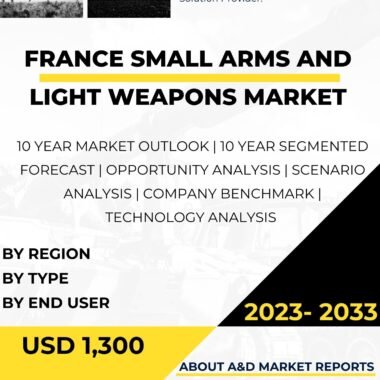Description
The assault rifle market in Malaysia has been a crucial aspect of the country’s defense procurement and modernization efforts. As a nation with strategic importance in Southeast Asia, Malaysia places significant emphasis on equipping its armed forces with advanced and reliable firearms to ensure national security and territorial defense.
Assault rifles are the primary small arms used by infantry personnel, offering a balance of accuracy, firepower, and portability. These weapons are versatile and are employed in various operational scenarios, including combat, counterterrorism, and peacekeeping missions. The Malaysian government’s commitment to enhancing its defense capabilities has led to the continuous development, acquisition, and modernization of assault rifles for its armed forces.
Over the years, Malaysia has procured assault rifles from various international suppliers to meet the needs of its armed forces. The selection of suitable assault rifles is based on factors such as performance, reliability, compatibility, and cost-effectiveness. Additionally, the rifles must align with the specific requirements and operating conditions faced by Malaysian troops, considering factors like climate, terrain, and operational objectives.
In recent times, Malaysia has also focused on promoting domestic defense industries and fostering indigenous production of assault rifles. Collaborations between local companies and foreign manufacturers have facilitated technology transfer and knowledge-sharing. This approach not only strengthens the local defense industry but also provides opportunities for Malaysia to customize and adapt the rifles to suit its specific operational needs.
The adoption of modern assault rifles has been a part of the broader modernization efforts undertaken by the Malaysian Armed Forces. Upgrading the small arms arsenal is essential to maintain operational readiness and ensure that the military can effectively respond to evolving threats. Furthermore, advanced assault rifles enhance the capabilities of frontline troops, contributing to the overall effectiveness of the armed forces.
In addition to conventional warfare applications, assault rifles also play a role in internal security operations. Law enforcement agencies and paramilitary forces employ these firearms in counterterrorism operations and maintaining public order. Therefore, the demand for reliable and effective assault rifles extends beyond the military and includes law enforcement agencies as well.
Malaysia’s geographical location, with extensive coastlines and maritime territories, has prompted the need for assault rifles suitable for marine environments. Specialized coatings and materials are often employed to ensure the rifles’ durability and resistance to corrosion, especially when used in coastal or maritime operations.
The Malaysian Armed Forces have also invested in providing modern training facilities and programs for personnel handling assault rifles. Proficient training ensures that soldiers are well-trained to operate the rifles effectively and safely. Additionally, training programs focus on marksmanship, tactical maneuvers, and close-quarter combat techniques, maximizing the rifles’ potential in various operational situations.
Challenges in the Malaysian assault rifle market include balancing the requirements of equipping a large military force with budgetary constraints. Procuring modern assault rifles can be a significant investment, and the government must prioritize expenditure to meet various defense needs.
Moreover, with advances in military technology and evolving threats, continuous research and development are necessary to keep the assault rifles updated and relevant. This involves enhancing the rifles’ accuracy, ergonomics, modularity, and incorporating smart technologies where applicable.
Striking a balance between imports and indigenous production is also a consideration. While international suppliers offer proven and reliable assault rifles, promoting domestic production bolsters the local defense industry and reduces reliance on foreign sources.
In conclusion, the assault rifle market in Malaysia is an essential component of the country’s defense strategy. The adoption of modern and reliable assault rifles ensures that the Malaysian Armed Forces are equipped with effective small arms to protect national interests and respond to security challenges. By combining international procurement with domestic production and investing in training, Malaysia aims to maintain a credible defense posture and continue its efforts towards strengthening the nation’s security and territorial integrity.




